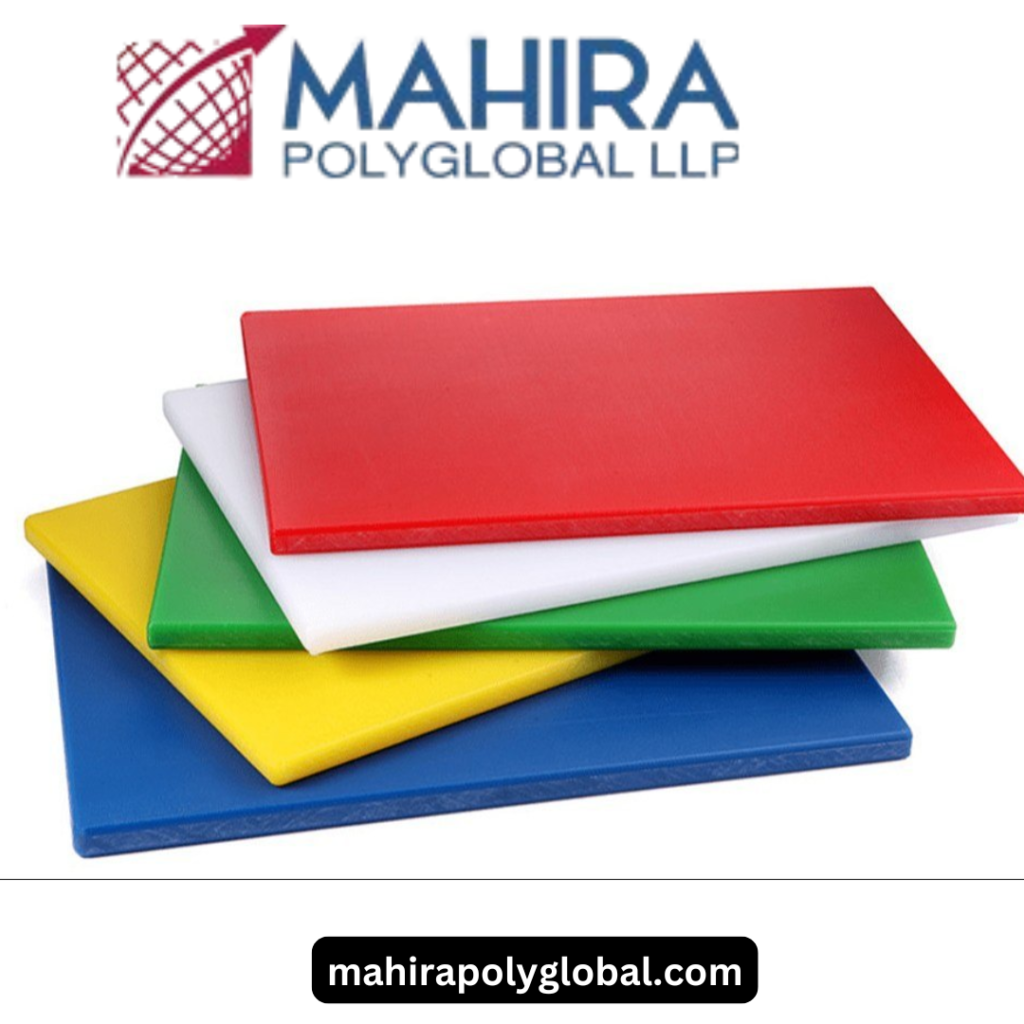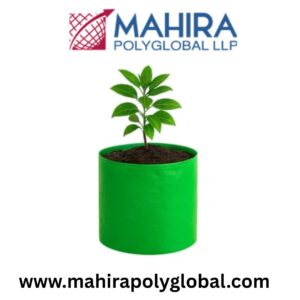In the realm of materials that shape our modern existence, some stand out for their quiet resilience and undeniable impact. Among these, HDPE Sheets plastic represent a pivotal component in countless applications, working behind the scenes to ensure functionality, durability, and safety. Far from being a simple commodity, hdpe plastic sheets embody a carefully engineered solution, balancing robust properties with versatility. This Mahira Polyglobal LLP will delve into the intricacies of plastic HDPE Sheetss, exploring their composition, the manufacturing processes that give them form, their diverse range of applications, their inherent benefits, and the maintenance considerations that ensure their long-term performance.
Decoding the Polymer Powerhouse: The Composition of HDPE
At the heart of HDPE Sheets plastic lies high-density polyethylene (HDPE), a thermoplastic polymer. This material is a product of the polymerization of ethylene, a simple hydrocarbon. The “high-density” designation is crucial, differentiating HDPE from other forms of polyethylene. The polymer chains in HDPE are densely packed, leading to its remarkable strength and rigidity. This close molecular arrangement gives hdpe plastic sheets an exceptional ability to withstand stress, impact, and other demanding conditions. Plastic HDPE Sheetss also exhibit outstanding chemical resistance, capable of withstanding a wide variety of corrosive materials, including acids, bases, solvents, and other potentially damaging substances. Furthermore, they are known for their very low moisture absorption, enabling them to excel in environments where moisture and humidity are major considerations. These combined attributes make HDPE Sheets plastic an ideal choice for demanding applications where durability, chemical inertness, and water resistance are paramount.
From Raw Material to Finished Form: The Creation of HDPE Sheets
The manufacturing process for HDPE Sheets plastic is a carefully controlled procedure, transforming raw materials into a versatile and robust product. The process starts with the melting of HDPE resin pellets, transforming them into a molten state. This molten plastic is then fed into an extruder, which is the key machine in the production line. Inside the extruder, the heated plastic is forced through a die, a precisely shaped opening, which determines the final dimensions of the sheet. Additives play a critical role in fine-tuning the properties of plastic HDPE Sheetss. These can include UV stabilizers to protect the plastic from ultraviolet radiation, colorants for aesthetic appeal, and antioxidants to extend the material’s lifespan. After extrusion, the material passes through a cooling process, solidifying and stabilizing the plastic. Finally, the solidified sheets undergo cutting to the desired sizes. Specialized cutting tools are often used to ensure precision and a uniform finish. Rigorous quality control measures are in place at every stage of the manufacturing process to ensure consistent thickness, dimensions, and overall material integrity.
A Spectrum of Applications: Where HDPE Sheets Excel
The adaptability of HDPE Sheets plastic is reflected in the wide range of industries where they are used. In construction, these sheets are utilized extensively as vapor barriers to protect buildings from moisture damage, thereby extending their lifespan and reducing maintenance needs. In industrial settings, they are used in the manufacturing of tanks, pipes, and a wide variety of machine components due to their chemical resistance and durability. The food and beverage industries utilize plastic HDPE Sheetss in cutting boards, storage containers, and packaging, thanks to their non-toxic nature and ease of sanitation. The transportation sector utilizes HDPE Sheets plastic in automotive components, marine applications, and aerospace components, benefiting from the sheets’ excellent strength-to-weight ratio and resistance to environmental factors. Outdoor applications, such as playground equipment and recreational areas, benefit from the weather resistance and impact resistance of hdpe plastic sheets. These various applications underscore the versatility and adaptability of the material in a variety of contexts.
The Winning Attributes: Why HDPE Sheets are a Top Choice
The widespread adoption of Sheet of hdpe is a direct result of their exceptional attributes. A key advantage is their impressive strength-to-weight ratio, creating products that are lightweight yet incredibly durable. This facilitates easier handling and installation, lowering overall costs. The chemical resistance is another vital advantage, ensuring a long lifespan by protecting against degradation from a variety of substances. Plastic HDPE Sheetss are notably durable, resisting impact, wear, and the effects of harsh weather conditions. Their low moisture absorption renders them perfect for humid environments and protects them against water exposure. Moreover, they are recyclable, aligning with the growing emphasis on sustainability. These inherent advantages explain the many reasons why HDPE Sheets plastic are often the preferred material for many applications.
Working with HDPE: Fabrication and Installation Considerations
One of the key advantages of working with HDPE Sheets plastic is the ease of fabrication and installation, increasing its widespread use. Standard tools can be employed to cut, drill, saw, and shape hdpe plastic sheets, therefore offering flexibility and control in the design and installation phases. Welding, especially using hot gas welding techniques, is a great option to create strong, leak-proof joints, and this makes the material ideal for tanks and other containment structures. Furthermore, HDPE Sheets plastic can be fastened using screws, bolts, or adhesives, allowing for flexible construction configurations. Because plastic HDPE Sheetss are lightweight, handling and installation are made easier and also reduces costs. This opens doors to the use of these sheets in a wide range of industrial and construction projects where ease of installation is a key factor.
Extending the Lifespan: Care and Maintenance Practices
Proper care and maintenance are critical in ensuring the longevity and optimum performance of HDPE Sheets plastic. Regular cleaning with mild soap and water is usually sufficient to remove dirt and grime from the surfaces. The use of abrasive cleaning products should be avoided to prevent scratching. Although designed to withstand a variety of conditions, prolonged exposure to direct sunlight or rapid changes in temperature can have an impact on the performance of the hdpe plastic sheets. Protecting HDPE Sheets plastic from prolonged exposure to direct sunlight can extend their lifespan. Regular inspections to detect potential issues in a timely manner are also essential, so that any required maintenance or repairs can be promptly addressed. This will ensure the consistent and dependable performance of plastic HDPE Sheetss over a longer period.
Conclusion and FAQs: Recapping and Answering Common Questions
In conclusion, Plastic sheet hdpe have established themselves as indispensable materials across a wide array of industries and applications. Their remarkable combination of strength, chemical resistance, ease of fabrication, and low cost make them incredibly versatile and useful. From construction and industrial processes to food handling and transportation, these often-overlooked sheets play a vital role in our modern world. Understanding the attributes, applications, and maintenance aspects of hdpe plastic sheets allows us to fully appreciate their value and contribution to a diverse array of advancements in the modern world.
Here are four frequently asked questions about plastic HDPE Sheetss:
- What makes HDPE Sheets plastic so resistant to chemicals?
The tight molecular structure of HDPE, preventing chemicals from penetrating and causing damage, is the basis for this chemical resistance. - Are hdpe plastic sheets safe for use with food?
Yes, HDPE Sheets plastic are typically considered food-grade and are suitable for food contact, but it’s always recommended to verify the specific product’s food-grade certification. - How can I tell if my HDPE Sheets plastic is UV-resistant?
The datasheet from the manufacturer will confirm whether or not the material has UV stabilizers that can help protect it from sun damage. - Are HDPE Sheets plastic recyclable?
Yes, HDPE Sheets plastic are recyclable, contributing to a more sustainable approach to materials usage and the circular economy.



